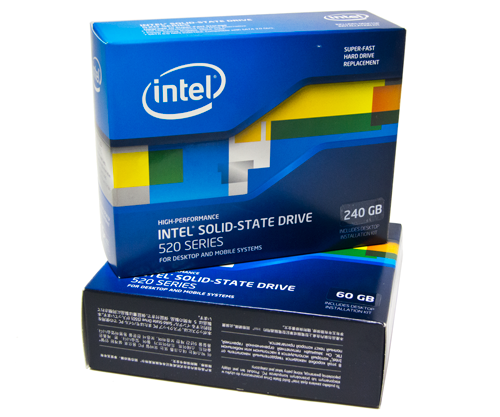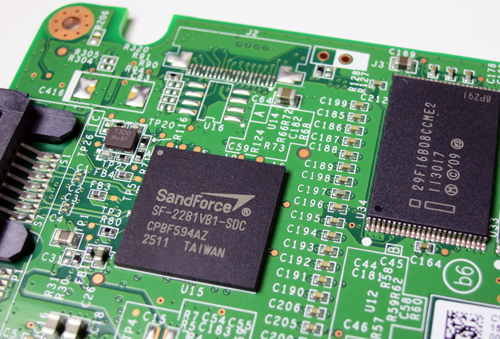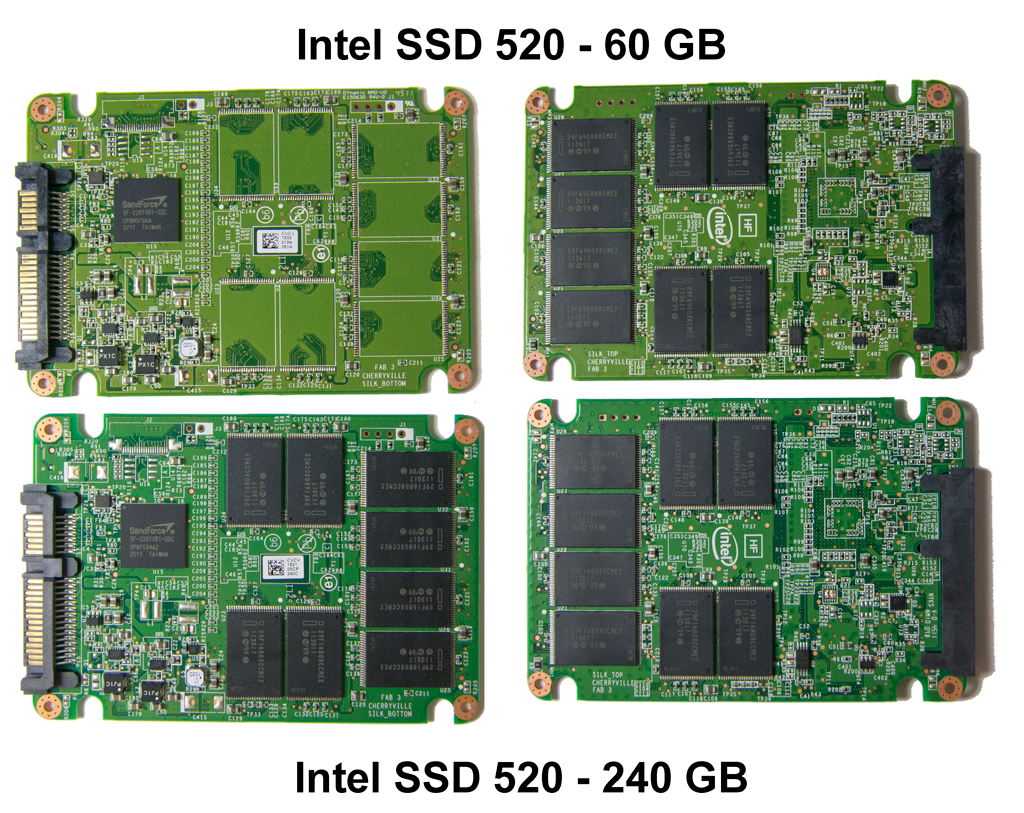Intel SSD 520 Review: Taking Back The High-End With SandForce
Intel’s SSD 520: Enthusiast Storage By SandForce?
Many of the vendors who piece together SSDs using SandForce's controller hardware peddled system memory in a previous life. By nature, they push the envelope. How else do you differentiate otherwise-pedestrian DRAM products? This same approach now carries over into the storage space. Everyone's trying to milk as much performance as possible given a similar set of tools. That means similar controller logic, a couple of different firmware versions, and a handful of choices in NAND flash interface (with some quality variability thrown in).
But there's this perception out there that the manufacturers working with SandForce's technology are simultaneously trying to crank up the dials on performance while cutting back as much as possible on cost in order to establish a dominant position in the hierarchy. Sometimes when that happens, things break. And we've seen issues with a handful of SSD products as a result. Problems are generally fixed with some swiftness, but when you're working with personal data, there really is no margin for error. And that's why a great many businesses end up buying storage technologies they trust, first and foremost, rather than chasing performance specifications.
That takes us to Intel. Intel and Samsung have two of the best track records that we've seen, at least in our lab and in conversations with readers, when it comes to reliability. Samsung has its own modern 6 Gb/s controller hardware, which lets it compete at the top of our charts against the very best from SandForce and Marvell. Intel, however, does not.
It's significant, then, that Intel's new SSD 520 is the latest offering to center on the same SandForce technology we've been writing about for...wow, has it already been one year since OCZ introduced its Vertex 3 Pro?
Given the number of competing drives available employing the same foundation, it'd be easy to write the SSD 520 off as another variant based on familiar components. But remember that this is Intel. The company is staunch about its reliability story, and we have to imagine it wouldn't push a me-too product to market unless it knew it could continue preaching that same message. Could this be the first SSD that really validates SandForce's work as a purveyor of fast and reliable storage hardware? Surely, if that's the case, SandForce won't be able to take all of the credit. Remember that Intel has access to the very best flash manufactured by IMFT, its joint venture with Micron Technology. As a result, its drives inherently sport the proverbial pick of the litter, contributing to higher endurance ratings.
And so we're faced with a slightly different solid-state drive today. It's a SandForce-driven engine fueled by Intel's almost-manic emphasis on data protection. That's an exciting proposition for the enthusiasts who care about both of those qualities (and really, who doesn't?).
We're not ready to hand over hard-earned dollars and irreplaceable college papers to the SSD 520 that blindly, though. We want to know what Intel is doing differently, and how the company is circumventing some of the issues experienced by other SSD vendors working with this same platform.
Get Tom's Hardware's best news and in-depth reviews, straight to your inbox.
Meet Intel's SSD 520
As a direct result of Intel's decision to use SandForce's SF-2281 controller, the SSD 520 inherently shares more hardware in common with competing drives employing the same logic than any of its current offerings.
Not surprisingly, then, we're dealing with an eight-channel architecture populated by ONFi 2.2-compliant NAND manufactured on IMFT's existing 25 nm node. Although the partnership already announced 64 Gb densities etched at 20 nm, we'll have to wait patiently before that memory starts finding its way into SSDs.
The last performance-oriented drive Intel launched was the SSD 510. Built around Marvell's 88SS9174 controller and 34 nm memory, the company held itself to 120 and 250 GB capacities. It's making the SSD 520 available in a much broader range of capacities, including 60, 120, 180, 240, and 480 GB. As with any other SSD product out there, performance can be expected to scale to some extent based on the size of the drive you buy.
At any given capacity point, then, you can expect the peak performance numbers for Intel's SSD 520 to line up pretty closely to competing SandForce-based offerings. For instance, OCZ rates its 240 GB Vertex 3 at 550 and 520 MB/s in sequential reads and writes, respectively. Intel boasts the same figures. OCZ pegs 4 KB random reads and writes at 60 000 and and 85 000 IOPS (again, respectively). Intel comes close, claiming 50 000 and 80 000 IOPS.
Sure, those I/O specs are lower. But they also represent a big jump up from anything we've seen from Intel in the past. And the company claims its firmware implementation is completely its own, which could account for the on-paper disadvantage. Given already-aggressive specifications, though, we're perhaps most curious about why Intel found it necessary to put an effort into customizing the controller's software and what else it might have changed under the hood.
User Accessible Space: Differences at 120 GB
| User Accessible Space | Raw NAND | IDEMA | RAISE | Effective OP | User Accessible Space |
|---|---|---|---|---|---|
| OCZ Vertex 3 60 GBIntel SSD 520 60 GB | 64 GB | 60 GB | 0 GB | 4 GB | 55.9 GiB |
| Crucial m4 64 GBSamsung 830 64 GB | 64 GB | 64 GB | - | - | 59.63 GiB |
| OCZ Vertex 3 120 GB | 128 GB | 120 GB | 8 GB | 0 GB | 111.79 GiB |
| Intel SSD 520 120 GB | 128 GB | 120 GB | 0 GB | 8 GB | 111.79 GiB |
| Crucial m4 128 GBSamsung 830 128 GB | 128 GB | 128 GB | - | - | 119.24 GiB |
| OCZ Vertex 3 240 GBIntel SSD 520 240 GB | 256 GB | 240 GB | 8 GB | 8 GB | 223.57 GiB |
| Crucial m4 256 GBSamsung 830 256 GB | 256 GB | 256 GB | - | - | 238.47 GiB |
User-accessible space became a hot-button topic last year when certain Vertex 2 drives were discovered to have less available capacity as the company shifted from 3x to 2x nm flash within the same model names. We discussed this in The OCZ Vertex 2 Conspiracy: Lost Space, Lost Speed?.
The SSD 520 doesn't deviate from what we now consider the norm for SandForce-based drives. The entire SSD 520 series employs 7% over-provisioning. So while the 60 GB model, for example, includes 64 GB of raw NAND, it's advertised as a 60 GB drive that Windows reports as having 55.9 GB available (due to the conversion from decimal to binary units). In comparison, Crucial's and Samsung's offerings don't have any NAND specifically set aside for over-provisioning, allowing them to claim 64 GB of capacity, even if that gets converted down to 59.6 GB in Windows.
There's also the issue of SandForce's RAISE (Redundant Array of Independent Silicon Elements) technology to consider, since this is a new capability within Intel's SSD portfolio. RAISE is responsible for helping protect against the non-correctable errors that ECC cannot prevent, and enabling it requires Intel to set aside one NAND flash die worth of capacity. On a 60 GB SSD composed of 8 GB dies, that's a lot of space to give up. So, most vendors don't enable the feature on those smaller models. From what we've seen, RAISE is almost universally used at 240 GB and larger. And some manufacturers use it for their 120 GB offerings.
In the above screen shot, Windows 7 reports that Intel's 120 GB SSD 520 and OCZ's 120 GB Vertex 3 both have 111.79 GiB. Yet, there is a difference between them. By enabling RAISE on the 120 GB Vertex 3, OCZ sets aside 8 GB of space toward that feature, leaving nothing for over-provisioning. In comparison, Intel disables RAISE on its 120 GB SSD 520, eliminating the redundant space, but bestowing upon it the benefits associated with over-provisioning.
Is it a problem that Intel's 60 and 120 GB SSD 520s don't benefit from RAISE? According to the company, no. SandForce designed RAISE to allow SSD vendors to use lower-quality NAND chips with its more premium controller without sacrificing longevity. But because Intel arms its SSD 520 family with top-shelf flash, any concern about endurance gets downplayed.
Current page: Intel’s SSD 520: Enthusiast Storage By SandForce?
Next Page Test Setup And Benchmarks-
phamhlam I love Intel SSD. 128GB for about $210 isn't bad. It is just hard to not chose something like a Corsair GT 120GB that cost $150 with rebate over this. I would always put a Intel SSD in a computer for novice since it is reliable.Reply -
jaquith Nice article :)Reply
Just need more SSD's to compare, I'd like to see similar tests done with 120GB...180GB...256GB and several more brands. Further, as I mentioned before in the other article please list the exact model numbers and OEM specs including their 4KB IOPS; otherwise folks don't understand the results and if relying on this a purchasing will have in many cases a 4 in 5 chance of selecting the wrong SSD.
Prior article - http://www.tomshardware.com/reviews/sata-6gbps-performance-sata-3gbps,3110.html -
theuniquegamer costly but i think reliability comes at a price. These ssds are best for enterprises . If the price will be little lower then the common user can afford these and get a good reliable ssd.Reply -
bildo123 "Measuring boot time is one of the best illustrations of how an SSD benefits your computing experience." Be that as it may I find it almost irrelevant seeing as I hardly ever boot my computer, perhaps 2-3 times a month if that. Getting out of standby on my HDD is a matter of seconds.Reply -
danraies These prices are lower than I thought. $20-$40 extra (depending on the comparison) for peace-of-mind is not outrageous.Reply -
acku carn1xHmmm, maybe I missed a good excuse, but I'd like to see the Octane in these tests.Reply
We didn't have the Octane on hand in the 256 GB capacity, but we'll be sure to make that side by side comparison down the road.
phamhlamI love Intel SSD. 128GB for about $210 isn't bad. It is just hard to not chose something like a Corsair GT 120GB that cost $150 with rebate over this. I would always put a Intel SSD in a computer for novice since it is reliable.
Excellent point. Price is always a fickle thing.
thessdreviewNice Review!Thanks Les. :)
jaquithNice article Just need more SSD's to compare, I'd like to see similar tests done with 120GB...180GB...256GB and several more brands. Further, as I mentioned before in the other article please list the exact model numbers and OEM specs including their 4KB IOPS; otherwise folks don't understand the results and if relying on this a purchasing will have in many cases a 4 in 5 chance of selecting the wrong SSD. Prior article - http://www.tomshardware.com/review ,3110.html
We'll keep that mind for future reviews. However, we already list model and firmware on the test page.
Cheers,
Andrew Ku
TomsHardware.com
-
willard bildo123Getting out of standby on my HDD is a matter of seconds.And with an SSD, your computer comes out of standby faster than your monitors do. Not kidding.Reply -
mrkdilkington Anyone else disappointed Intel isn't producing their own high end chipset? Been waiting to upgrade my X25-M for a while now (Intel 320 isn't a big upgrade) but might just go with Samsung.Reply



